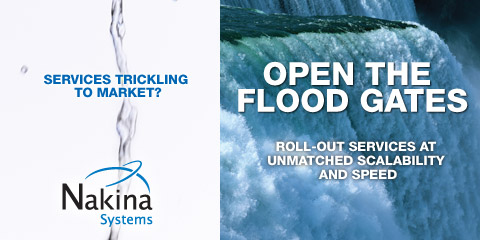
By Ed Finegold
The prospect of a new revenue stream is exciting. It can mean growth that translates into increased shareholder value and healthy bonuses for all involved. But new revenue streams are also challenging to find, difficult to project, and expensive to create. While they make for good headlines, they don’t always play as well in the board room, or in the CFO’s office. IT is partly to blame. IT suppliers and organizations have promised in the past that investments in new IT will result in new revenue. The OSS/BSS sector continues to voice this promise on a daily basis. The question is whether new revenue generation provides a legitimate basis for an IT business case. In most cases, it’s in the conversation, but rarely does it trump the need to drive cost out of the business. In an environment where networks, services, and service providers are converging, IT redundancy is being exposed as painful dead weight.
As IT organizations push for new capabilities, like convergent charging that makes it easy for customers to transact with a CSP as they please, Convergys argues that revenue generation is not the foundation on which to base a business case. “The business case can’t just be built on new revenue because the risks are significant,” says Alastair Hanlon, Director, Product & Solution Strategy, Information Management, Convergys. “You need to focus on the cost reduction that comes from consolidation.”
|
|
My CFO is Furious and He's Not Going to Take it Anymore |
|


The problem with this argument, however, is that it is very expensive and risky. Major IT transformations require significant dollars in the first year. IT costs spike as new architectures are built out to support new services that might be launched sometime in year one, or early in year two of a program. Those dollars don’t generate many benefits until new services are selling in the marketplace and redundant systems are decommissioned, their functions and data migrated to the new platforms. Multi-year programs generally aim to accomplish these dual goals, and often they fall short. A new architecture might be built out successfully, perhaps even on time and in line with budgets, but migration plans don’t come to fruition. When this happens, IT has added
|
|
|
|

Cost reduction isn’t as sexy a story as revenue generation, but because it contributes to an improved bottom line, it’s a story CFOs and boards of directors want to hear. Service convergence has thrust IT transformation into the spotlight. A standard argument says that because most CSP operations are built on product, functional, and geographic silos, they simply aren’t flexible or synchronized enough to support converged service offerings. As a result, major transformation initiatives are necessary to create a common IT infrastructure that costs less in the long term while enabling new services that generate more revenue.
|
|

cost and redundancy to the business rather than simplifying the overall IT structure and eliminating redundant costs.
My CFO is Furious and He’s Not Going to Take it Anymore
Many CSPs are suffering from just this type of scenario and their CFOs aren’t happy. When a CIO then comes to the table with a new plan to invest in more IT that promises revenue generation up front and cost reduction in the long term, the CFO just doesn’t want to hear about it. If I’m a CFO, I have one question for
article page
| 1 | 2 | 3 | 4 | |
|






